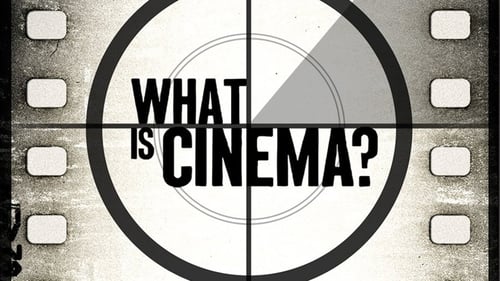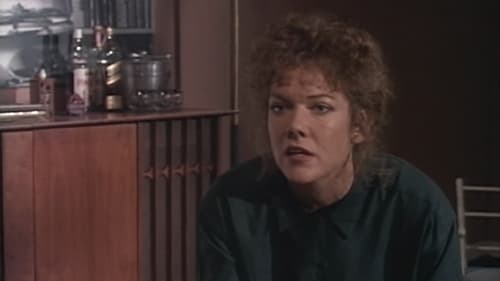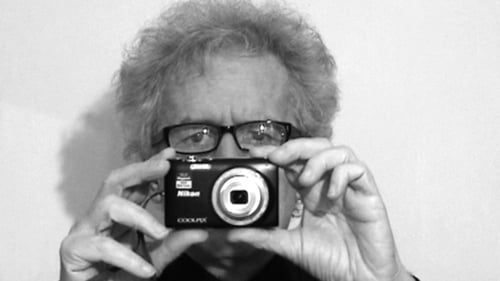
Yvonne Rainer
Nacimiento : 1934-11-24, San Francisco, California, USA
Historia
Yvonne Rainer was born in San Francisco in 1934. She trained as a modern dancer in New York and began to choreograph her own work in 1960. She was one of the founders of the Judson Dance Theater in 1962, a movement that proved to be a vital force in modern dance in the following decades. Between 1962 and 1975 Rainer presented her choreography throughout the U.S. and Europe.
In 2000 and 2001 Rainer returned to dance via commissions from the Baryshnikov Dance Foundation to choreograph work for the White Oak Dance Project, including a 35-minute piece called After Many a Summer Dies the Swan.
Since 1972, Rainer has completed seven feature-length films, beginning with Lives of Performers (1972) and more recently The Man Who Envied Women (1985), Privilege (1990), and MURDER and murder (1996).
Rainer has received numerous awards and fellowships for her work, including two Guggenheim Fellowships (1969, 1988), three Rockefeller Fellowships (1988, 1990, 1996), a MacArthur Fellowship (1990-95), and a Wexner Prize (1995), as well as four Honorary Doctor of Fine Arts Degrees. Yvonne Rainer: Work 1961-73 was published by Nova Scotia College of Art and Design and New York University Press in 1974; The Films of Yvonne Rainer, a collection of her film scripts, was published by Indiana University Press in 1989; and A Woman Who...: Essays, Interviews, Scripts was published by Johns Hopkins University Press in 1999.
Rainer's latest choreographic work, based on Balanchine's AGON, was presented at Dance Theater Workshop, April 2006, subsequently traveling to the Getty Museum. A memoir, Feelings are Facts: A Life, was published by MIT Press in 2006.

Self
Feelings Are Facts: The Life of Yvonne Rainer chronicles the defiant, uncompromising, and highly influential ideas of postmodern choreographer and filmmaker Yvonne Rainer. Over the course of her career, she revolutionized modern dance, generated what later became known as performance art, and changed the basic tenets of experimental filmmaking - all during a time when women were largely ignored in the art world. Today she continues to push forward, creating vibrant, courageous, unpredictable work, inspiring a new generation of artists to question, overthrow, and generate possibilities of their own. Feelings Are Facts: The Life of Yvonne Rainer is the story of this remarkable artist and the equally remarkable times that shaped her creative practice.

Self
Using the words and ideas of great filmmakers, from archival interviews with Alfred Hitchcock and Robert Bresson to new interviews with Mike Leigh, David Lynch, and Jonas Mekas, Oscar-winning filmmaker Chuck Workman shows what these filmmakers and others do that can't be expressed in words - but only in cinema.

Salomania reconstructs a dance: the ‘dance of the seven veils’ from Alla Nazimova’s 1923 silent film Salomé. Also shown and rehearsed are sections from ‘Valda’s Solo,’ which the choreographer and filmmaker Yvonne Rainer created after having seen Nazimova’s film.

Director
Yvonne Rainer combines a dance performance she choreographed for Mikhail Barryshnikov’s White Oak Dance Project in 2000 with texts by Oscar Kokoschka, Adolf Loos, Arnold Schoenberg, and Ludwig Wittgenstein—four of the most radical innovators in painting, architecture, music, and philosophy to emerge from fin-de-siècle Vienna.

Director
"For me Rainer Variations is a hybrid: a weave of impressionistic portrait, found footage construction, and video sampler. Aside from formal issues, Yvonne Rainer’s knotty process of thinking, her unique brand of humor, and her engaging presence are the things that were foremost in my mind as I worked on the tape. What I hope will emerge from this process is an interrogative portrait of an artist for whom I have great respect and affection." --Charles Atlas

Editor
Mildred and Doris are two middle-aged white women, from very different backgrounds, who become lovers and set up house together. Film explores the pleasures and uncertainties of later-life emotional attachment and lesbian identity in a culture that glorifies youth and heterosexual romance.

Producer
Mildred and Doris are two middle-aged white women, from very different backgrounds, who become lovers and set up house together. Film explores the pleasures and uncertainties of later-life emotional attachment and lesbian identity in a culture that glorifies youth and heterosexual romance.

Writer
Mildred and Doris are two middle-aged white women, from very different backgrounds, who become lovers and set up house together. Film explores the pleasures and uncertainties of later-life emotional attachment and lesbian identity in a culture that glorifies youth and heterosexual romance.

Director
Mildred and Doris are two middle-aged white women, from very different backgrounds, who become lovers and set up house together. Film explores the pleasures and uncertainties of later-life emotional attachment and lesbian identity in a culture that glorifies youth and heterosexual romance.

Editor
Privilege is an intelligently conceived, boldly anarchic, and wickedly insightful exposition on the culturally ingrained and socially divisive malaise of isms that artificially define and characterize empowerment in contemporary society: ageism, sexism, economic elitism, and racism. Yvonne Rainer conveys texture through the intercutting of archival footage, video, and film - as well as compositional layering through the film-within-a-film structure, elliptical (and self-referential) fusion of past and present, and the filmmaker's idiosyncratic penchant for superimposed typed text.

Producer
Privilege is an intelligently conceived, boldly anarchic, and wickedly insightful exposition on the culturally ingrained and socially divisive malaise of isms that artificially define and characterize empowerment in contemporary society: ageism, sexism, economic elitism, and racism. Yvonne Rainer conveys texture through the intercutting of archival footage, video, and film - as well as compositional layering through the film-within-a-film structure, elliptical (and self-referential) fusion of past and present, and the filmmaker's idiosyncratic penchant for superimposed typed text.

Writer
Privilege is an intelligently conceived, boldly anarchic, and wickedly insightful exposition on the culturally ingrained and socially divisive malaise of isms that artificially define and characterize empowerment in contemporary society: ageism, sexism, economic elitism, and racism. Yvonne Rainer conveys texture through the intercutting of archival footage, video, and film - as well as compositional layering through the film-within-a-film structure, elliptical (and self-referential) fusion of past and present, and the filmmaker's idiosyncratic penchant for superimposed typed text.

Helen Caldicott
Privilege is an intelligently conceived, boldly anarchic, and wickedly insightful exposition on the culturally ingrained and socially divisive malaise of isms that artificially define and characterize empowerment in contemporary society: ageism, sexism, economic elitism, and racism. Yvonne Rainer conveys texture through the intercutting of archival footage, video, and film - as well as compositional layering through the film-within-a-film structure, elliptical (and self-referential) fusion of past and present, and the filmmaker's idiosyncratic penchant for superimposed typed text.

Director
Privilege is an intelligently conceived, boldly anarchic, and wickedly insightful exposition on the culturally ingrained and socially divisive malaise of isms that artificially define and characterize empowerment in contemporary society: ageism, sexism, economic elitism, and racism. Yvonne Rainer conveys texture through the intercutting of archival footage, video, and film - as well as compositional layering through the film-within-a-film structure, elliptical (and self-referential) fusion of past and present, and the filmmaker's idiosyncratic penchant for superimposed typed text.

Editor
A Manhattan professor's (William Raymond, Larry Loonin) unseen artist wife mocks his pitiful existence.

Writer
A Manhattan professor's (William Raymond, Larry Loonin) unseen artist wife mocks his pitiful existence.

Director
A Manhattan professor's (William Raymond, Larry Loonin) unseen artist wife mocks his pitiful existence.

N°95
Reel 10 of Gérard Courant's on-going Cinematon series.

Editor
An epic meditation on psychoanalysis, the Baader-Meinhof, feminism, and pre-revolutionary Russia.

An epic meditation on psychoanalysis, the Baader-Meinhof, feminism, and pre-revolutionary Russia.

Director
An epic meditation on psychoanalysis, the Baader-Meinhof, feminism, and pre-revolutionary Russia.

N°95
Cinématon is a 156-hour long experimental film by French director Gérard Courant. It was the longest film ever released until 2011. Composed over 36 years from 1978 until 2006, it consists of a series of over 2,821 silent vignettes (cinématons), each 3 minutes and 25 seconds long, of various celebrities, artists, journalists and friends of the director, each doing whatever they want for the allotted time. Subjects of the film include directors Barbet Schroeder, Nagisa Oshima, Volker Schlöndorff, Ken Loach, Benjamin Cuq, Youssef Chahine, Wim Wenders, Joseph Losey, Jean-Luc Godard, Samuel Fuller and Terry Gilliam, chess grandmaster Joël Lautier, and actors Roberto Benigni, Stéphane Audran, Julie Delpy and Lesley Chatterley. Gilliam is featured eating a 100-franc note, while Fuller smokes a cigar. Courant's favourite subject was a 7-month-old baby. The film was screened in its then-entirety in Avignon in November 2009 and was screened in Redondo Beach, CA on April 9, 2010.

Director
I worked on Trio A alone for six months in 1965. The dance consisted initially of a 5-minute sequence of movement that would eventually be presented as The Mind is a Muscle, Part I at Judson Church on January 10, 1966. There it was performed by me, David Gordon, and Steve Paxton simultaneously but not in unison. In an interim version of The Mind is a Muscle (Judson Church, May 22, 1966), it was performed by William Davis, David Gordon, and Steve Paxton. In the final section, called Lecture, Peter Saul executed a balletic solo version, i.e. with pirouettes and jumps. In the final version (Anderson Theater, April 11, 1968), Trio A was performed by me in tap shoes in its original version at the end of the evening, while Paxton, Gordon, and Davis performed it as a trio at the beginning.

Kristina
Grand Opera marks a stock-taking of Benning's work and his life, presenting a personal and artistic autobiography woven together with a series of events dealing with the historical development of the number pi, Benning's travels, and homages to Michael Snow, Hollis Frampton, George Landow (Owen Land), and Yvonne Rainer.

Josephine de Collage
The notorious pirate ruler Madame X places a print ad, calling on women to escape their boring lives and promising "gold, love and adventure" to all who come aboard her ship, the Orlando. A motley crew including a housewife, diva and artist (played by Yvonne Rainer) embark on a quest for self-transformation, which quickly heads towards destruction as they are subjected to Madame X's sadistic, erotic escapades.

Editor
Kristina, a self-named Hungarian female lion tamer, arrives in New York to become a dance choreographer. Kristina, now a middle-class NYC artist concerned about the environment, has a sailor lover named Raoul. The film, a collage work, an essay film, a fictional narrative and a documentary all rolled into one, is one of the most important independent American feminists films made during the 1970's.

Kristina
Kristina, a self-named Hungarian female lion tamer, arrives in New York to become a dance choreographer. Kristina, now a middle-class NYC artist concerned about the environment, has a sailor lover named Raoul. The film, a collage work, an essay film, a fictional narrative and a documentary all rolled into one, is one of the most important independent American feminists films made during the 1970's.

Director
Kristina, a self-named Hungarian female lion tamer, arrives in New York to become a dance choreographer. Kristina, now a middle-class NYC artist concerned about the environment, has a sailor lover named Raoul. The film, a collage work, an essay film, a fictional narrative and a documentary all rolled into one, is one of the most important independent American feminists films made during the 1970's.

The film is about looking. I bet that slight variations of few recurrent elements would encourage the viewer to free associate and to fantasize a kind of narrative. - BM

Rainer’s landmark film is a meditation on ambivalence that plays with cliché and the conventions of soap opera while telling the story of a woman whose sexual dissatisfaction masks an enormous anger.

Writer
Rainer’s landmark film is a meditation on ambivalence that plays with cliché and the conventions of soap opera while telling the story of a woman whose sexual dissatisfaction masks an enormous anger.

Editor
Rainer’s landmark film is a meditation on ambivalence that plays with cliché and the conventions of soap opera while telling the story of a woman whose sexual dissatisfaction masks an enormous anger.

Director
Rainer’s landmark film is a meditation on ambivalence that plays with cliché and the conventions of soap opera while telling the story of a woman whose sexual dissatisfaction masks an enormous anger.

Editor
Embodying Rainer’s aesthetic rigor and wit, the film combines fiction and documentary, script readings, dance snippets, still photos, and tableaux vivants to explore issues of power and gender that influence the emotional lives of her performers.

Writer
Embodying Rainer’s aesthetic rigor and wit, the film combines fiction and documentary, script readings, dance snippets, still photos, and tableaux vivants to explore issues of power and gender that influence the emotional lives of her performers.

Embodying Rainer’s aesthetic rigor and wit, the film combines fiction and documentary, script readings, dance snippets, still photos, and tableaux vivants to explore issues of power and gender that influence the emotional lives of her performers.

Director
Embodying Rainer’s aesthetic rigor and wit, the film combines fiction and documentary, script readings, dance snippets, still photos, and tableaux vivants to explore issues of power and gender that influence the emotional lives of her performers.

Judson Memorial Church on the occasion of the People’s Flag Show, 1970. Film by Rudi Stern, John Reilly. Performers: David Gordon, Nancy Green, Barbara Dilley, Steve Paxton, Lincoln Scott, Yvonne Rainer. Video (black and white, sound).

Director
A blond woman (Susan Marshall) in white pants and shirt interacts with a moving round object and the camera. Camerawork by Phill Niblock.

Director
Two nudes, a man and a woman, interact with each other and a large balloon in a white living room. Performed by Steve Paxton and Becky Arnold. Camerawork by Phill Niblock.

Director
Ten minutes in an enormous chicken coop. Camerawork by Roy Levin.

Director
A volleyball is rolled into the frame and comes to rest. Two legs in sneakers, seen from the knees down, enter the frame and stand beside it. Cut to new angle, same characters and actions.

Director
Rainer's first film, Hand Film, was shot by fellow dancer William Davis when Rainer was confined to a hospital bed, recovering from major surgery and unable to dance. The resulting five minutes of footage is a sustained close-up shot of Rainer's hand against a grey background as it stretches and contracts, bends and points, performing the kinds of everyday, quotidian movements that characterize her pioneering minimalist choreography.

Rainer's first film, Hand Film, was shot by fellow dancer William Davis when Rainer was confined to a hospital bed, recovering from major surgery and unable to dance. The resulting five minutes of footage is a sustained close-up shot of Rainer's hand against a grey background as it stretches and contracts, bends and points, performing the kinds of everyday, quotidian movements that characterize her pioneering minimalist choreography.









